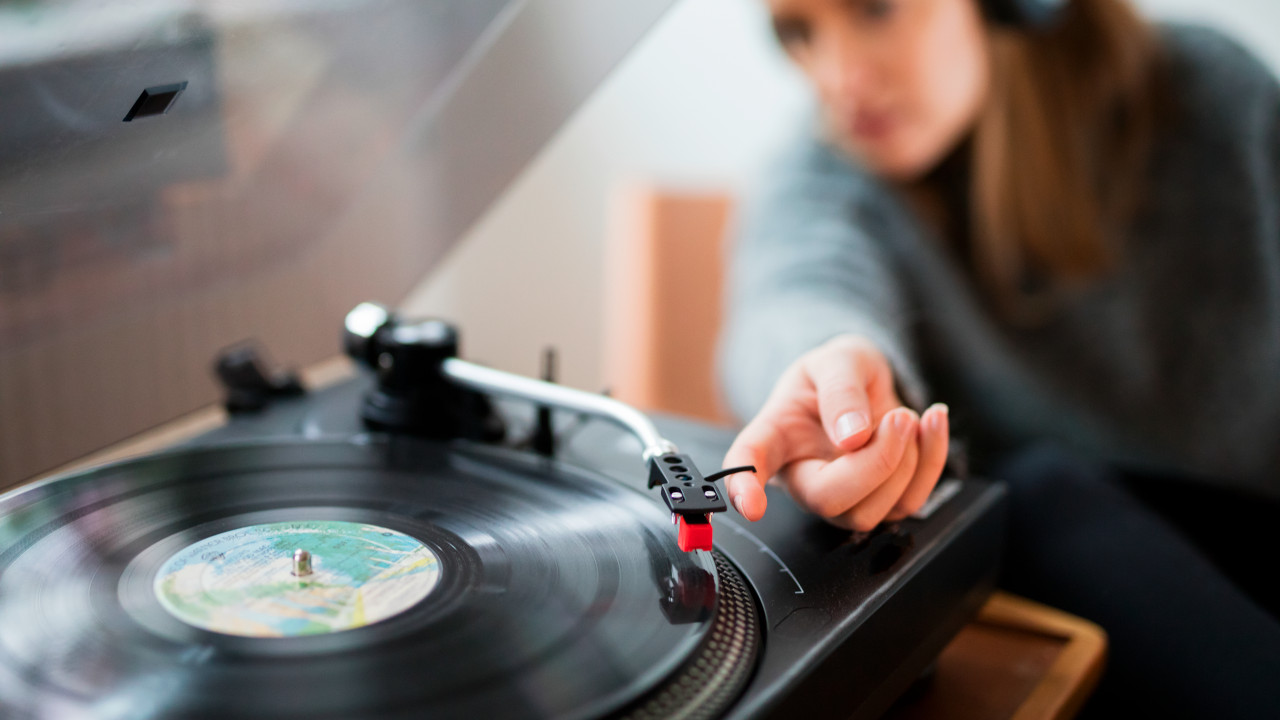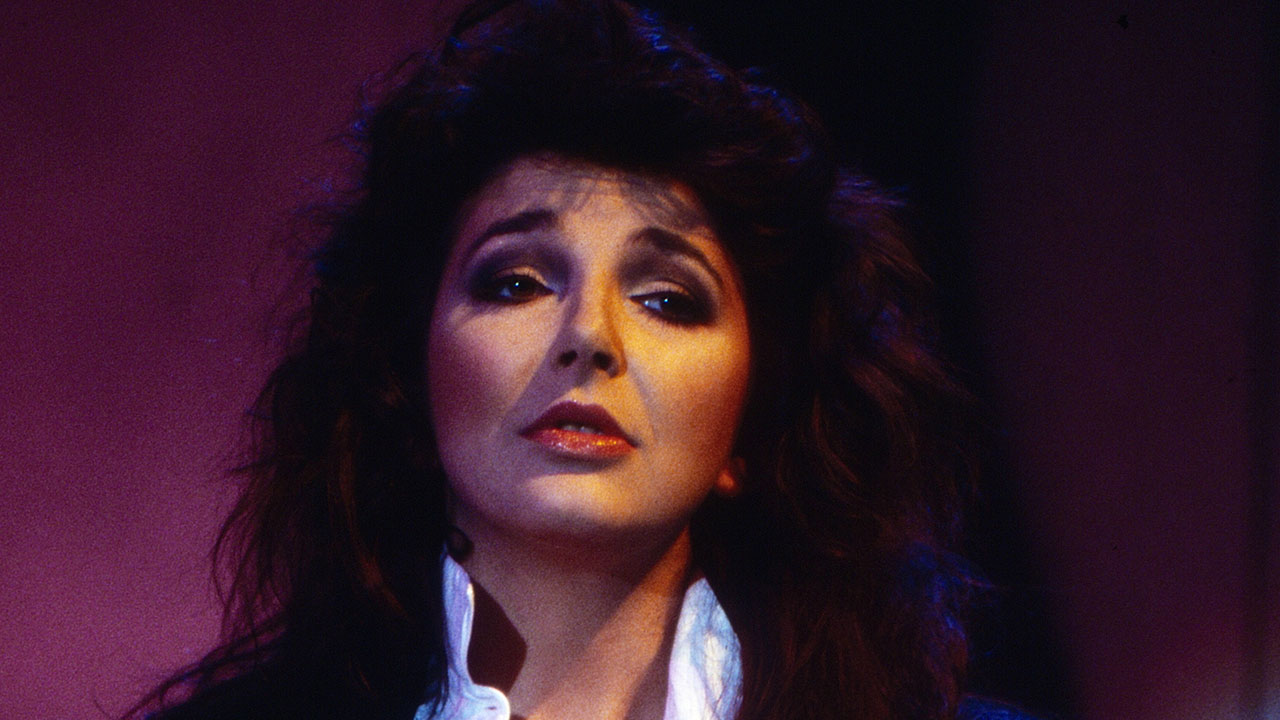Does vinyl really sound better than other formats?
Vinyl is often lauded for its warm sound, but is the experience of listening to a record tangibly different from digital or CD? We take a closer look

Collecting vinyl records is fun. Big, beautiful sleeve art, liner notes and lyric sheets, the tactile step-by-step of prepping your turntable and hi-fi – all in service of actively and purposefully listening to something you treasure. The format survived near-extinction in the late 20th century, having bounced back on a wave of format nostalgia – and for a keenly-held view on how they sound.
Everyone’s heard it before, whether from a frenzy-eyed friend or from an enthusiastic music-forum regular with an Electric Wizard album cover as their profile picture: the immortal, oft-cited and never-sourced words: “Vinyl sounds better." We’re often even inclined to nod a bit. But why?
The suggestion that vinyls (and yes, ‘vinyls’ is grammatically correct; do not make me die on this hill) have something over other listening formats is not without merit, but it's one that’s justified with some wonky science and common misconceptions.
Here, I'll be taking a broad and general glance at the medium with a view to setting the record straight on whether or not vinyl really does sound better, what that might even mean at all, and, ultimately, why you shouldn’t care that much anyway.
Forms and formats
Looking at it objectively, there is some clear logic to the suggestion that vinyl records sound better; after all, records are an analogue format. If digital music files are often compromised by lossy digital compression, then surely a vinyl record is better for being a physical format, with waveforms that are mechanically interpreted? While a logical thought process, the answer is a little more complicated – and mostly ‘no’, at that.
Records win an easy victory against low-bitrate mp3s, which suffer tangibly from compression artefacts, and put up a decent fight against streaming platforms such as Spotify (where audio normalisation can over-compress already-slammed tracks). But, just as scratched, dusty and well-loved old records don’t stand for the potential fidelity of vinyl as a format, so too are lossy audio files a poor example of what digital really means for audio. Besides which, records are a flawed format all of their own.
Despite being analogue, vinyl records still have a noise floor to contend with, giving them a palpable boundary for resolution. Also, the dynamic range of a good record on a good day is somewhere in the region of 70dB, where the dynamic range of the average 16-bit CD can reach up to 96dB. The spiralling-in of the record’s groove also means each successive track on a given side passes the stylus slower, squeezing the frequency range and introducing fresh tracking difficulties which risk distortion.
The latest news, features and interviews direct to your inbox, from the global home of alternative music.
In search of warmth

Thankfully, fidelity and resolution aren’t the only factors that influence the better-ness of one listening experience over another. Character is a key part of the equation and the leading argument that many choose when evangelising about vinyl over digital. A lot of talk about the experience of listening to vinyl leans toward the ineffable, but one word crops up more often than others in talking about how vinyl sounds: warmth.
Vinyls are described as warmer-sounding than digital formats, a characteristic difference and very real effect caused in large part by their aforementioned limitations. The slight roll-off of higher frequencies, especially further into a record, tames harshness; the mid-range is well-preserved and well represented to the point of prominence.
Bass, though, is an interesting problem as it is counterintuitively difficult to accurately represent bass on a record without causing the stylus to bounce out of the groove altogether. This brings us to another part of the equation altogether, which contributes both to the warmth of vinyl and to the general assertion of vinyl as better.
Getting the most from vinyl
The limitations and character of the vinyl format require an expertly-engineered approach at the mastering stage. Mastering engineers are dark-artists, that are solicited for their arcane powers today in service of producing punchy and volume-competitive songs for radio streaming. But the job of mastering is far more than making music loud and better – indeed, it exists as a direct consequence of vinyl, the name coming from cutting engineers and the ‘master disc’ that would stamp records.
Vinyl masters, then, are their own beast. They implement RIAA equalisation to reduce bass information and boost high-end information, an EQ curve countered by hi-fi hardware to improve low-end performance. They play ball with the limits of the form, they make compromises to better suit the music, and in turn can often result in listening experiences that genuinely, tangibly differ from the digital listening experience.
A sound investment

Of course, records don’t sound good in a vacuum; you need something to play them on! Getting the most out of your records means budgeting for a hi-fi system that represents them well – and that could include one of the best turntables with a decent cartridge, a phono pre-amp, an amplifier, and a set of turntable speakers to hear it all with.
Budget or all-in-one set-ups can often surprise in terms of quality, but are ultimately and clearly superseded by hi-fi setups with more investment – investment which can easily reach five figures at the audiophile end of the spectrum.
This has a dual impact, too; not only can someone invest a lot of money in a high-quality record-playing setup, but that investment represents personal investment in an opinion. If someone with a top-flight Pro-Ject turntable is telling you that records sound better than streaming, are you going to be surprised that they’ve reached that conclusion?
In conclusion
So, what am I saying here? Technically speaking, the vinyl format is demonstrably worse for sound fidelity than the average CD, but in practice can sound warmer and richer – both against the common lossy audio formats used by streaming services, and with thanks to mastering engineers doing great work in creating bespoke and beautiful masters for physical releases. Also, the money you spend on your hi-fi can inform your opinions on record fidelity.
But this a cynical place to leave things and doesn’t really speak to the truth of listening to and enjoying records. After all, vinyls are, in a word, fun! Dusting the record, placing the tonearm, poring over gatefold art and listening actively – this is ritualistic, experiential, and makes for a mode of listening entirely different from asking Siri to play Dopethrone please.
That the limitations of the vinyl format should diminish their enjoyability is ludicrous – but so too is attributing untruths to artificially elevate its capabilities. Here, a radical suggestion from me to you: enjoy your records!
Related content
- Why your choice of stylus and turntable cartridge matters
- Best vinyl records to test your turntable: The albums you need to own
- Cool vinyl record storage ideas
- How to store vinyl: Tips on keeping your collection in great condition
- Direct-drive vs belt-drive turntables: What's the difference?
- Best vinyl record cleaners: Keep your vinyl collection in prime condition

James Grimshaw is a freelance writer and music obsessive with over a decade in music and audio writing. They’ve lent their audio-tech opinions (amongst others) to the likes of Guitar World, MusicRadar and the London Evening Standard – before which, they covered everything music and Leeds through their section-editorship of national e-magazine The State Of The Arts. When they aren’t blasting esoteric noise-rock around the house, they’re playing out with esoteric noise-rock bands in DIY venues across the country; James will evangelise to you about Tera Melos until the sun comes up.
